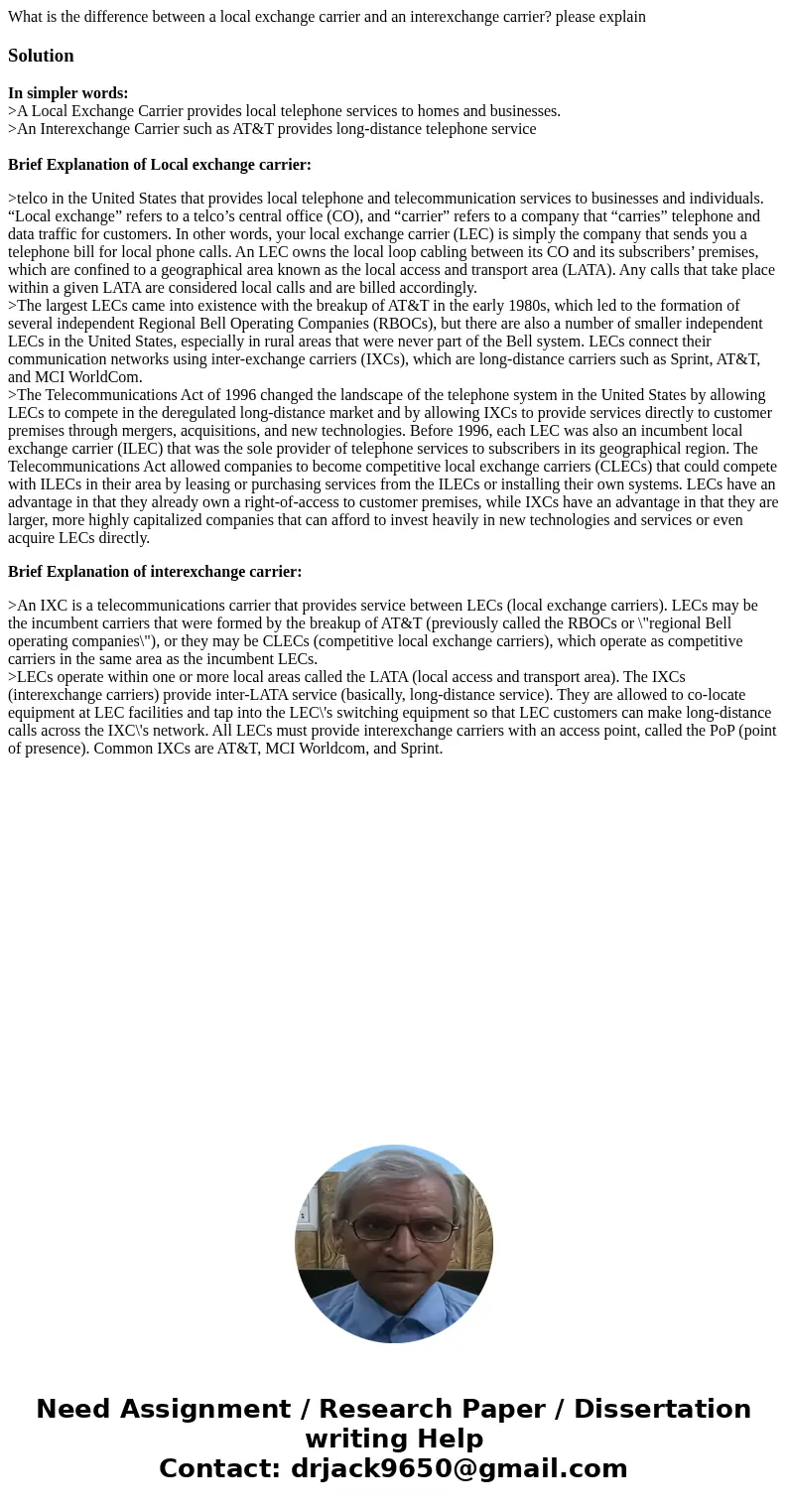What is the difference between a local exchange carrier and
What is the difference between a local exchange carrier and an interexchange carrier? please explain
Solution
In simpler words:
>A Local Exchange Carrier provides local telephone services to homes and businesses.
>An Interexchange Carrier such as AT&T provides long-distance telephone service
Brief Explanation of Local exchange carrier:
>telco in the United States that provides local telephone and telecommunication services to businesses and individuals. “Local exchange” refers to a telco’s central office (CO), and “carrier” refers to a company that “carries” telephone and data traffic for customers. In other words, your local exchange carrier (LEC) is simply the company that sends you a telephone bill for local phone calls. An LEC owns the local loop cabling between its CO and its subscribers’ premises, which are confined to a geographical area known as the local access and transport area (LATA). Any calls that take place within a given LATA are considered local calls and are billed accordingly.
>The largest LECs came into existence with the breakup of AT&T in the early 1980s, which led to the formation of several independent Regional Bell Operating Companies (RBOCs), but there are also a number of smaller independent LECs in the United States, especially in rural areas that were never part of the Bell system. LECs connect their communication networks using inter-exchange carriers (IXCs), which are long-distance carriers such as Sprint, AT&T, and MCI WorldCom.
>The Telecommunications Act of 1996 changed the landscape of the telephone system in the United States by allowing LECs to compete in the deregulated long-distance market and by allowing IXCs to provide services directly to customer premises through mergers, acquisitions, and new technologies. Before 1996, each LEC was also an incumbent local exchange carrier (ILEC) that was the sole provider of telephone services to subscribers in its geographical region. The Telecommunications Act allowed companies to become competitive local exchange carriers (CLECs) that could compete with ILECs in their area by leasing or purchasing services from the ILECs or installing their own systems. LECs have an advantage in that they already own a right-of-access to customer premises, while IXCs have an advantage in that they are larger, more highly capitalized companies that can afford to invest heavily in new technologies and services or even acquire LECs directly.
Brief Explanation of interexchange carrier:
>An IXC is a telecommunications carrier that provides service between LECs (local exchange carriers). LECs may be the incumbent carriers that were formed by the breakup of AT&T (previously called the RBOCs or \"regional Bell operating companies\"), or they may be CLECs (competitive local exchange carriers), which operate as competitive carriers in the same area as the incumbent LECs.
>LECs operate within one or more local areas called the LATA (local access and transport area). The IXCs (interexchange carriers) provide inter-LATA service (basically, long-distance service). They are allowed to co-locate equipment at LEC facilities and tap into the LEC\'s switching equipment so that LEC customers can make long-distance calls across the IXC\'s network. All LECs must provide interexchange carriers with an access point, called the PoP (point of presence). Common IXCs are AT&T, MCI Worldcom, and Sprint.

 Homework Sourse
Homework Sourse